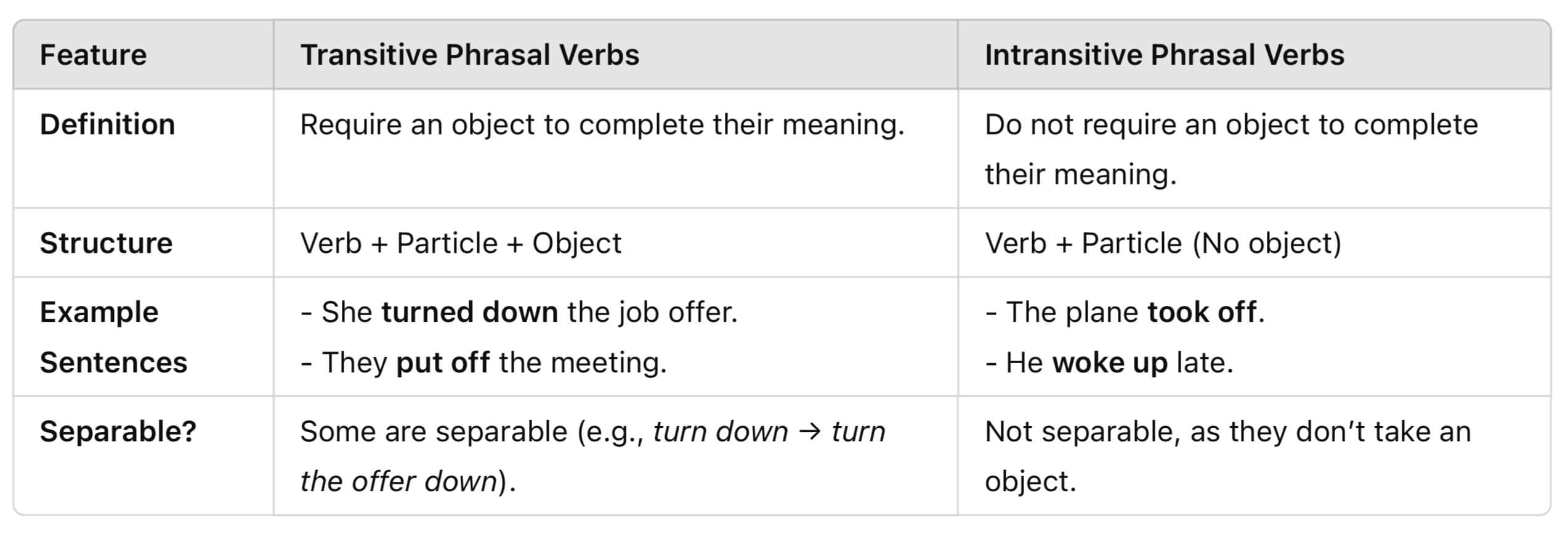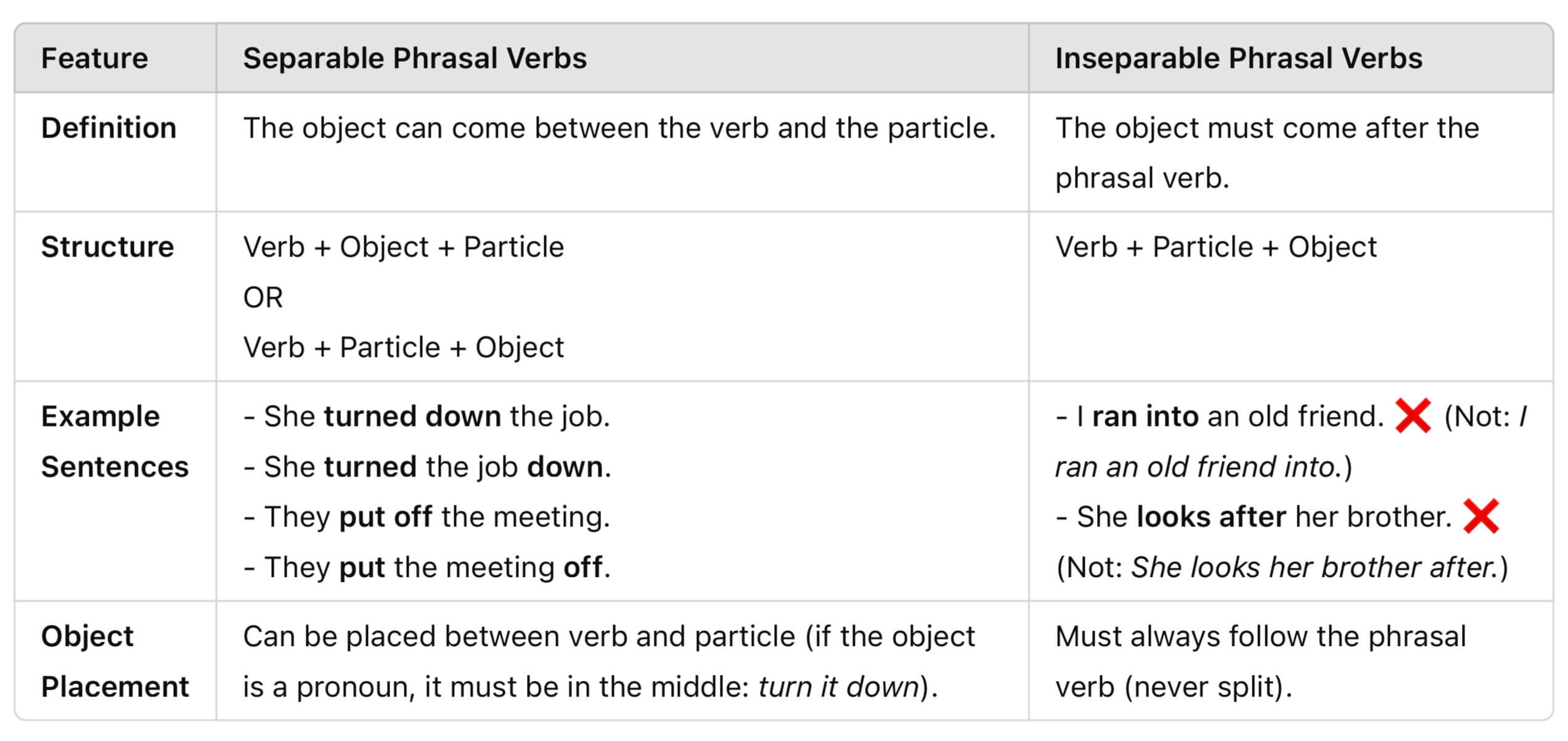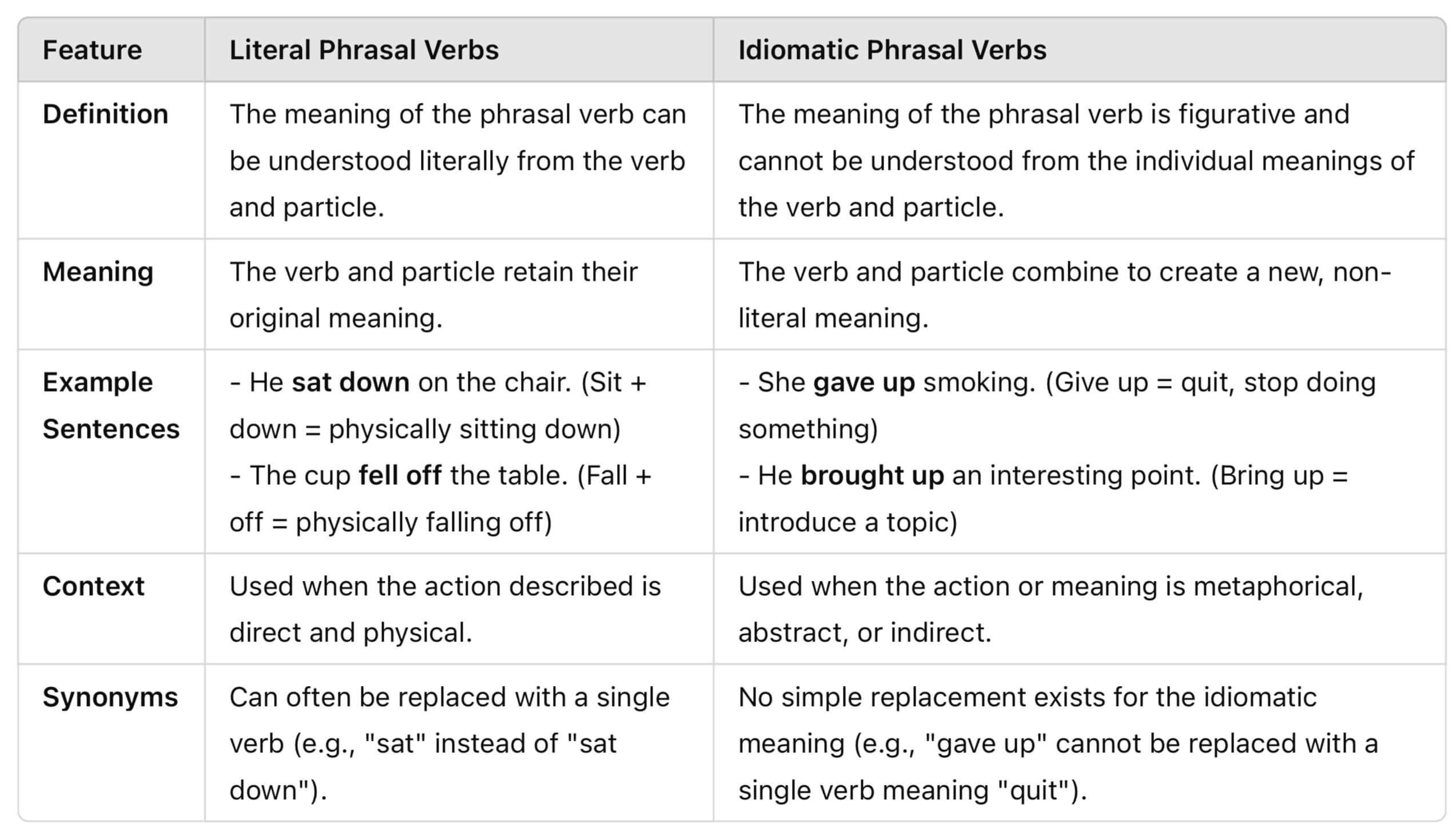Phrasal verbs are an essential part of the English language, commonly used in both casual and formal conversations. However, they can be tricky for English learners because their meanings are often idiomatic and not directly related to the individual words. This blog post will help you understand, categorize, and effectively use phrasal verbs in your daily communication.
What Are Phrasal Verbs?

Types of Phrasal Verbs
Transitive vs. Intransitive Phrasal Verbs

Separable vs. Inseparable Phrasal Verbs

Literal vs. Idiomatic Phrasal Verbs



